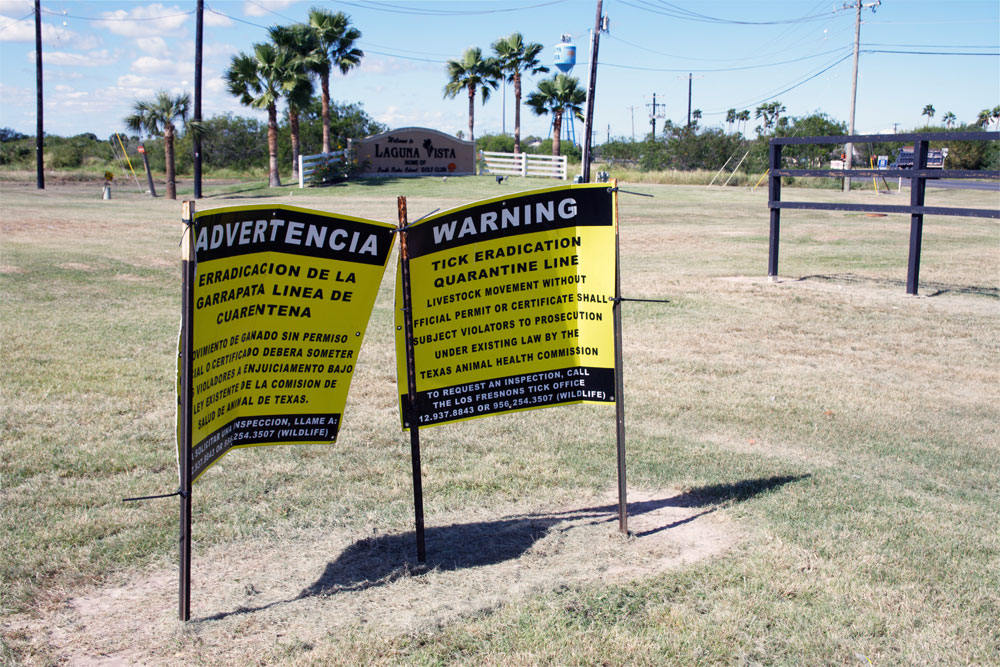The signage springing up in the Rio Grande Valley designating a Cattle Fever Tick Quarantine Zone is aimed at reminding hunters they need to have the hides treated before they take their game to be processed.
Experts from the Texas Animal Health Commission and the U.S. Department of Agriculture are on-call to perform the tick-killing procedure.
The regulations are required for taking white-tailed deer, nilgai antelope, black buck, axis deer or any other exotic cervids in or within three miles of a fever tick quarantine zone.
The rules are in place for portions of Cameron, Jim Hogg, Jim Wells, Hidalgo, Kinney, Maverick, Starr, Webb, Willacy and Zapata counties. All have established fever tick quarantine areas.
“The Texas Animal Health Commission recently placed signs to notify hunters and landowners of hide inspection requirements in the already existing Fever Tick Quarantine or Surveillance Zones,” TAHC staff said in an e-mail. “These are most likely the signs you are seeing in the area.”
The procedure involves removing the hide or cape from the carcass, putting it in a plastic bag, and fumigating it with an oil that kills all ticks that may have been on the animal before the hide can be released.
Inspectors will issue on-the-spot permits indicating the hide has been treated.
TAHC staff say the procedure doesn’t take long but is critical to prevent the spread of cattle fever ticks and the diseases they carry out of quarantine zones. The disease bovine babesiosis can be transmitted by the ticks and has long been recognized as a threat to the U.S. cattle industry.
Inspectors urge hunters to provide their GPS coordinates if possible when calling in, but say they are familiar with the areas they cover, and will find hunters even without the GPS location.
Hunters found with untreated game carcasses in fever tick quarantine zones can face fines.
The rules have been in place for bow hunters since their season opened Oct. 2. The general gun season for white-tailed deer in South Texas opens Saturday.




